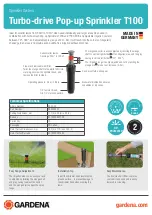
C-Nav Hardware Reference Guide
12
C-Nav Subscription Service
Description
The C-NavC
1
and C-NavC
2
Subscription
Services are a global system for the distribution
of SBAS corrections giving the user the ability to
measure their position anywhere in the world
with exceptional reliability and unprecedented
accuracy of better than 10cm (2
ơ). Because the
SBAS corrections are broadcast via INMARSAT
geo-stationary satellites, the user needs no local
reference stations or post-processing to get this
exceptional accuracy. Furthermore, the same
accuracy is available virtually anywhere on the
earth's surface on land or sea from 72
°
N to 72
°
S
latitude, due to the worldwide coverage of these
geo-stationary satellites.
Infrastructure
The system utilizes GNSS satellite systems, L-Band communication satellites, and a worldwide
network of reference stations, to deliver real-time high-precision positioning.
To provide this unique service, C-Nav has built a global network of multi-frequency reference
stations, which constantly receive signals from GNSS satellites as they orbit the earth. Data
from these reference stations is fed to two USA processing centers, in Torrance, California and
Moline, Illinois, where they are processed to generate the differential corrections.
From the two processing centers, the correction data is fed via redundant and independent
communication links to satellite uplink stations at Laurentides, Canada; Perth, Australia; Burum,
The Netherlands; Santa Paula, California; Auckland, New Zealand; and Southbury, Connecticut
for rebroadcast via the
geo-stationary satellites.
The key to the accuracy and convenience of the C-Nav Subscription Service is the source of
SBAS corrections. GNSS satellites transmit navigation data on several L-Band frequencies
1
.
The C-Nav reference stations are all equipped with geodetic-quality, multi-frequency receivers.
These reference receivers decode GNSS signals and send precise, high quality, multi-
frequency pseudorange and carrier phase measurements back to the processing centers
together with the data messages, which all GNSS satellites broadcast.
At the processing centers, C-Nav's proprietary differential processing techniques are used to
generate real-time precise orbits and clock correction data for each satellite in the GNSS
constellations. This proprietary Wide Area DGNSS (WADGNSS) algorithm is optimized for a
multi-frequency system such as the C-Nav Subscription Service, in which multi-frequency
ionospheric measurements are available at both the reference receivers and the user receivers.
It is the use of multi-frequency receivers at both the reference stations and the user equipment,
1
A single-frequency operation mode is available for the C-Nav3050. Contact C-Nav Support for details on using this
feature. Single-frequency is a receiver mode that uses only the L1 GPS/G1 GLONASS signals. There is no
compensation for ionospheric effects.
Содержание 1000
Страница 1: ...DGNSS Systems Hardware Guide www cnavgnss com ...
Страница 20: ...C Nav Hardware Reference Guide 20 Figure 2 3 C Nav Antenna Mounting Pole Dimensions ...
Страница 61: ...C Nav Hardware Reference Guide 61 Figure 3 61 C NaviGator II rev A front USB port model Outline Diagram mm ...
Страница 65: ...C Nav Hardware Reference Guide 65 Model No 3402 17 0070 Specifications ...
Страница 67: ...C Nav Hardware Reference Guide 67 Huber Suhner Lightning Protector Mounting Instructions ...
Страница 68: ...C Nav Hardware Reference Guide 68 ...
Страница 69: ...C Nav Hardware Reference Guide 69 MOXA Converters TCC 80I TCC 80I Specifications ...
Страница 70: ...C Nav Hardware Reference Guide 70 TCC 80I Dimensions Figure 4 3 Moxa TCC 80I Converter Dimensions TCC 82 ...
Страница 72: ...C Nav Hardware Reference Guide 72 Times Microwave LMR400 Coaxial Cable LMR400 Specifications ...
Страница 74: ...C Nav Hardware Reference Guide 74 ...













































